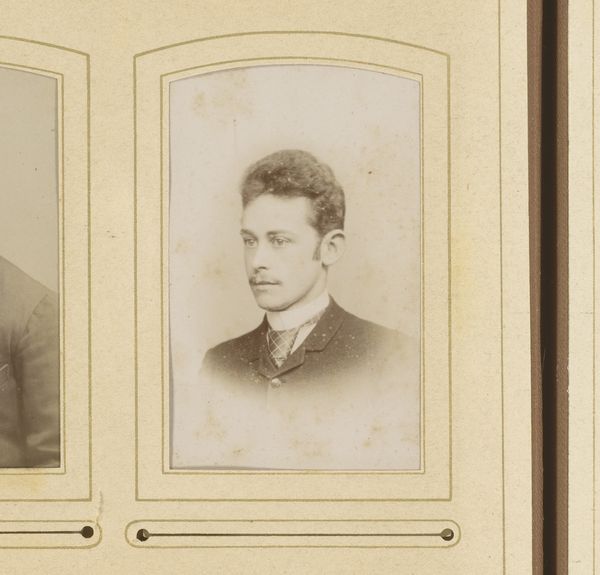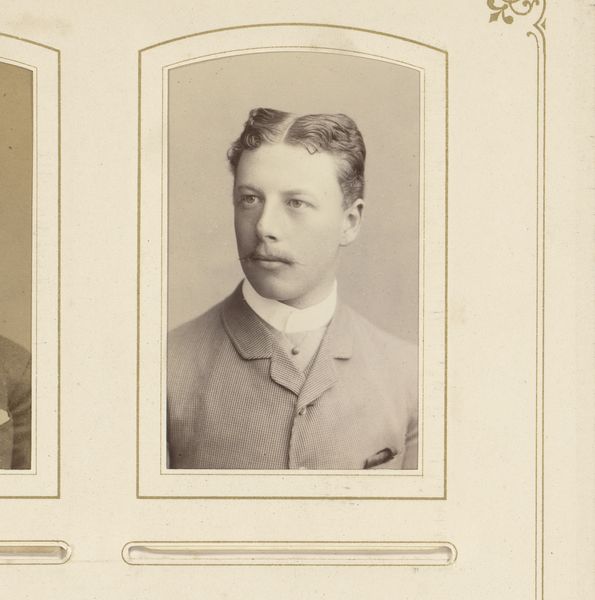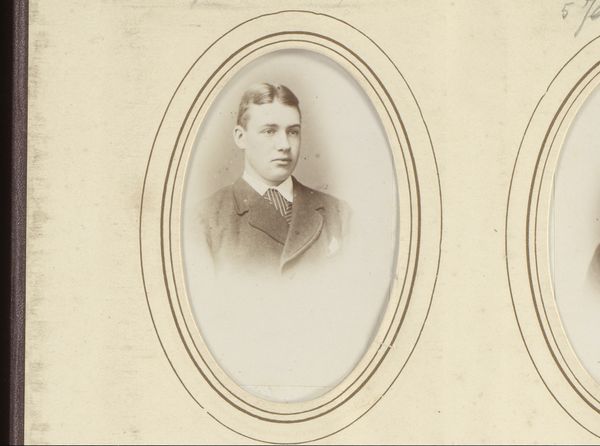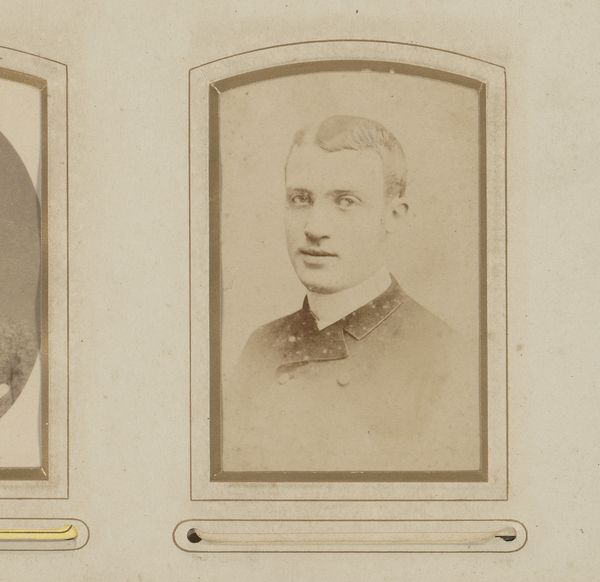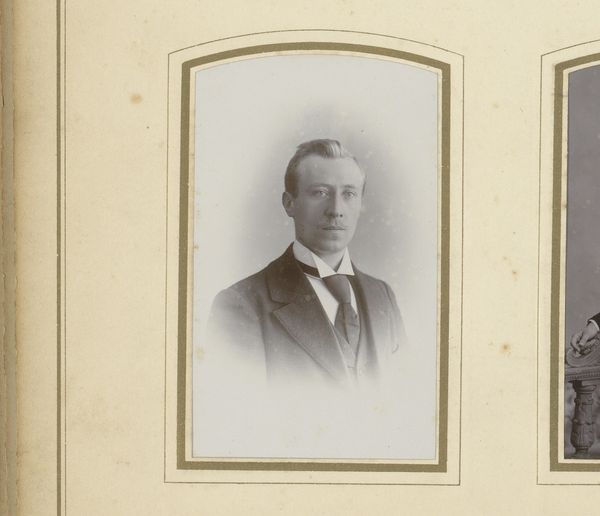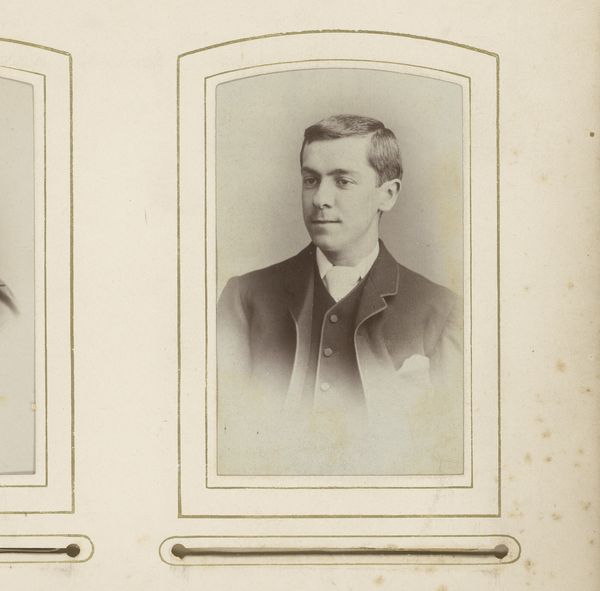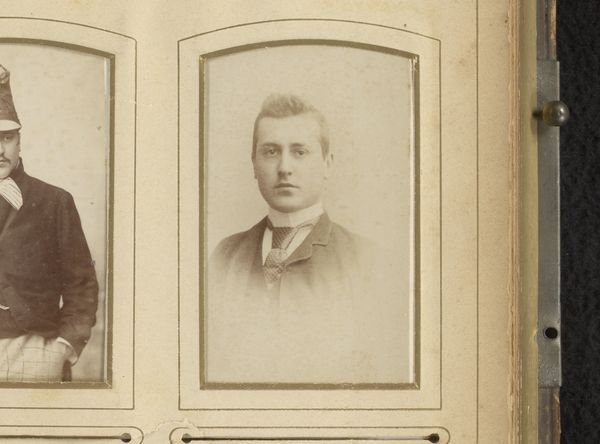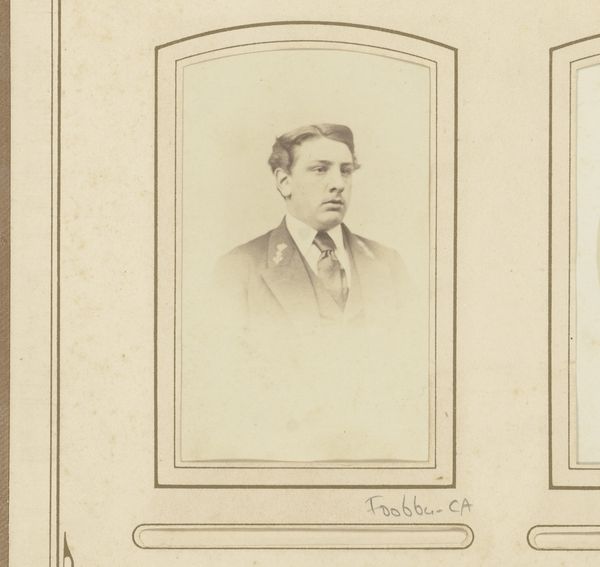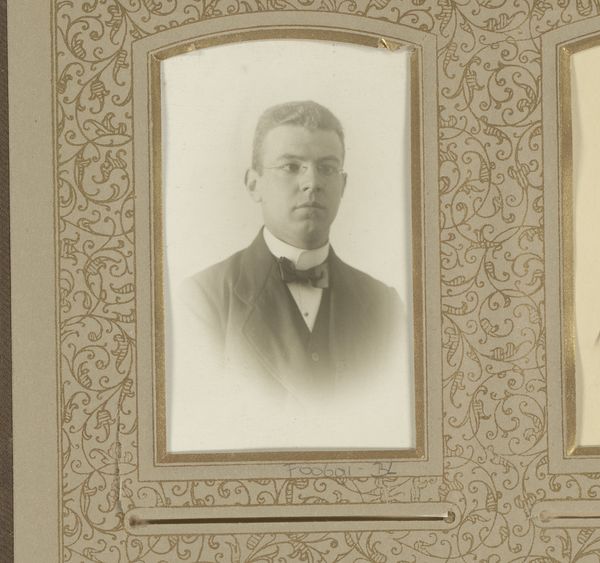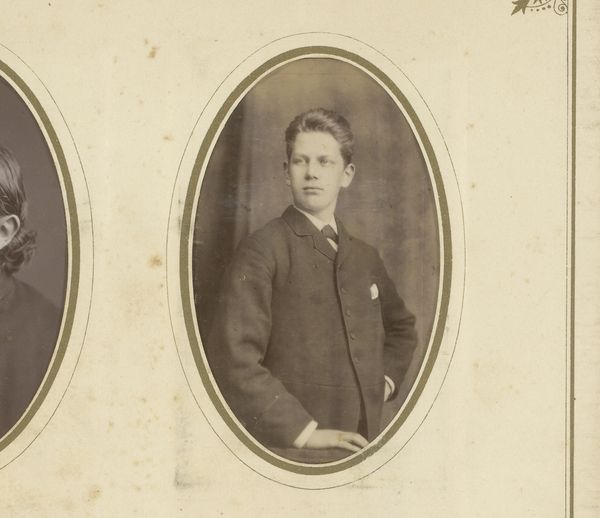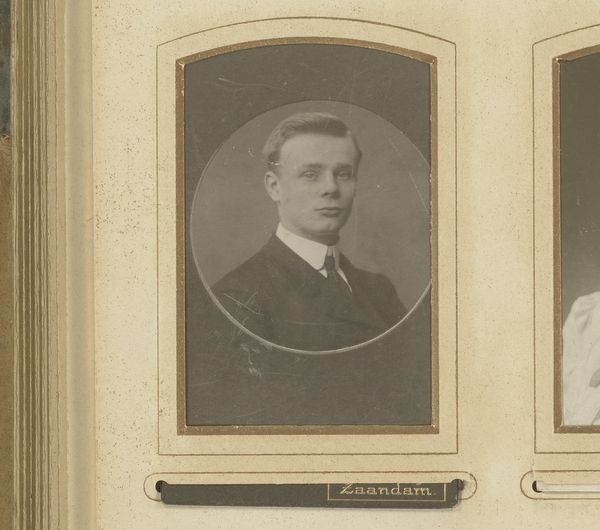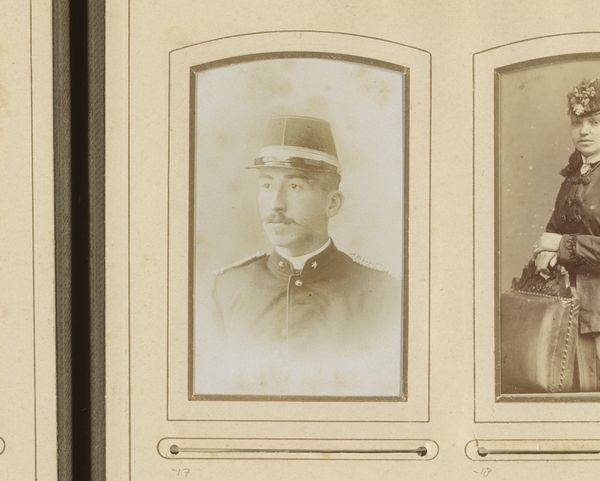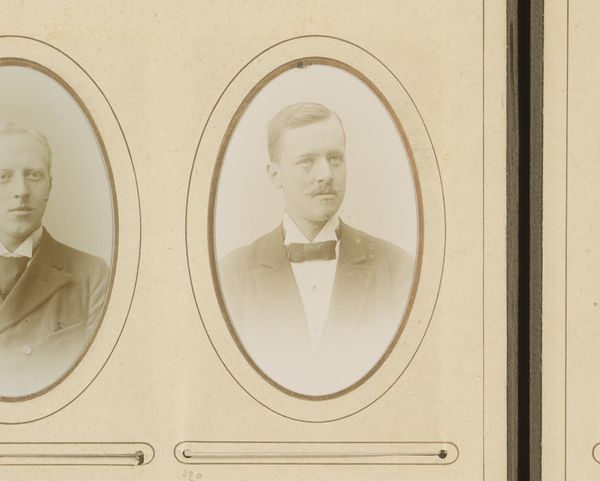
photography
#
portrait
#
photography
#
historical photography
#
19th century
#
academic-art
Dimensions: height 85 mm, width 51 mm
Copyright: Rijks Museum: Open Domain
Editor: Here we have "Portret van een jonge man, aangeduid als Oscar Visser," a photograph dating back to 1885 by L. Herzog. It's a rather faded portrait, giving it a ghostly, almost dreamlike quality. How do you interpret this work within its historical context? Curator: This photograph offers a window into the late 19th-century culture of portraiture and its evolving relationship with social status and memory. Photographic portraits became increasingly accessible during this period, marking a shift from painted portraits as exclusive signifiers of wealth and prominence. How does the subject's attire strike you? Editor: He appears to be wearing a somewhat formal suit with a bow tie, suggesting middle-class respectability perhaps? Curator: Precisely. The suit and tie, coupled with his composed demeanor, align with the conventions of bourgeois portraiture, aimed at projecting an image of social decorum and upward mobility. Photography's role here is crucial: it democratized image-making while simultaneously reinforcing social hierarchies through established visual codes. Editor: So it's both revolutionary and conservative at the same time. Interesting! Does the fading contribute to how we view it now? Curator: Absolutely. The photograph's age and its delicate state highlight its existence as a historical artifact, connecting us to the past and inviting reflection on the passage of time, changing notions of beauty and the fragility of memory. It challenges the perception of photography as an objective record, pointing instead to its subjective, temporal and culturally contingent nature. Editor: It’s fascinating how much social information can be gleaned from one faded photograph. Thanks for pointing all of that out! Curator: My pleasure! Reflecting on the visual conventions and historical contexts can really open up our understanding of art.
Comments
No comments
Be the first to comment and join the conversation on the ultimate creative platform.
